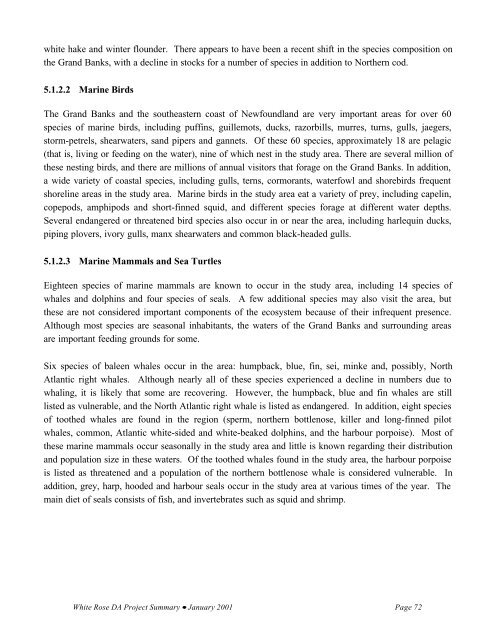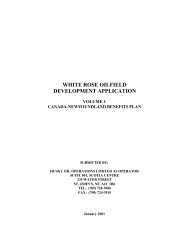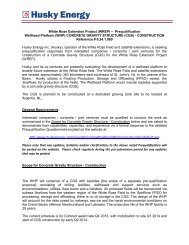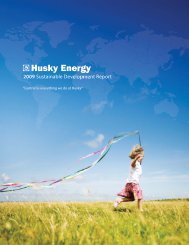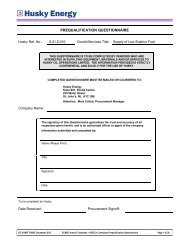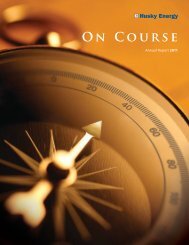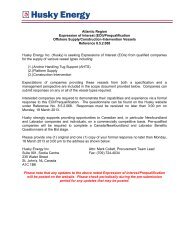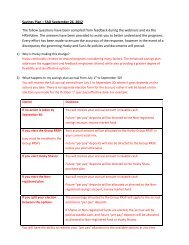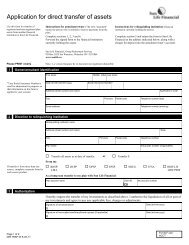white rose oilfield development application - Husky Energy
white rose oilfield development application - Husky Energy
white rose oilfield development application - Husky Energy
- No tags were found...
You also want an ePaper? Increase the reach of your titles
YUMPU automatically turns print PDFs into web optimized ePapers that Google loves.
<strong>white</strong> hake and winter flounder. There appears to have been a recent shift in the species composition onthe Grand Banks, with a decline in stocks for a number of species in addition to Northern cod.5.1.2.2 Marine BirdsThe Grand Banks and the southeastern coast of Newfoundland are very important areas for over 60species of marine birds, including puffins, guillemots, ducks, razorbills, murres, turns, gulls, jaegers,storm-petrels, shearwaters, sand pipers and gannets. Of these 60 species, approximately 18 are pelagic(that is, living or feeding on the water), nine of which nest in the study area. There are several million ofthese nesting birds, and there are millions of annual visitors that forage on the Grand Banks. In addition,a wide variety of coastal species, including gulls, terns, cormorants, waterfowl and shorebirds frequentshoreline areas in the study area. Marine birds in the study area eat a variety of prey, including capelin,copepods, amphipods and short-finned squid, and different species forage at different water depths.Several endangered or threatened bird species also occur in or near the area, including harlequin ducks,piping plovers, ivory gulls, manx shearwaters and common black-headed gulls.5.1.2.3 Marine Mammals and Sea TurtlesEighteen species of marine mammals are known to occur in the study area, including 14 species ofwhales and dolphins and four species of seals. A few additional species may also visit the area, butthese are not considered important components of the ecosystem because of their infrequent presence.Although most species are seasonal inhabitants, the waters of the Grand Banks and surrounding areasare important feeding grounds for some.Six species of baleen whales occur in the area: humpback, blue, fin, sei, minke and, possibly, NorthAtlantic right whales. Although nearly all of these species experienced a decline in numbers due towhaling, it is likely that some are recovering. However, the humpback, blue and fin whales are stilllisted as vulnerable, and the North Atlantic right whale is listed as endangered. In addition, eight speciesof toothed whales are found in the region (sperm, northern bottlenose, killer and long-finned pilotwhales, common, Atlantic <strong>white</strong>-sided and <strong>white</strong>-beaked dolphins, and the harbour porpoise). Most ofthese marine mammals occur seasonally in the study area and little is known regarding their distributionand population size in these waters. Of the toothed whales found in the study area, the harbour porpoiseis listed as threatened and a population of the northern bottlenose whale is considered vulnerable. Inaddition, grey, harp, hooded and harbour seals occur in the study area at various times of the year. Themain diet of seals consists of fish, and invertebrates such as squid and shrimp.White Rose DA Project Summary • January 2001 Page 72


